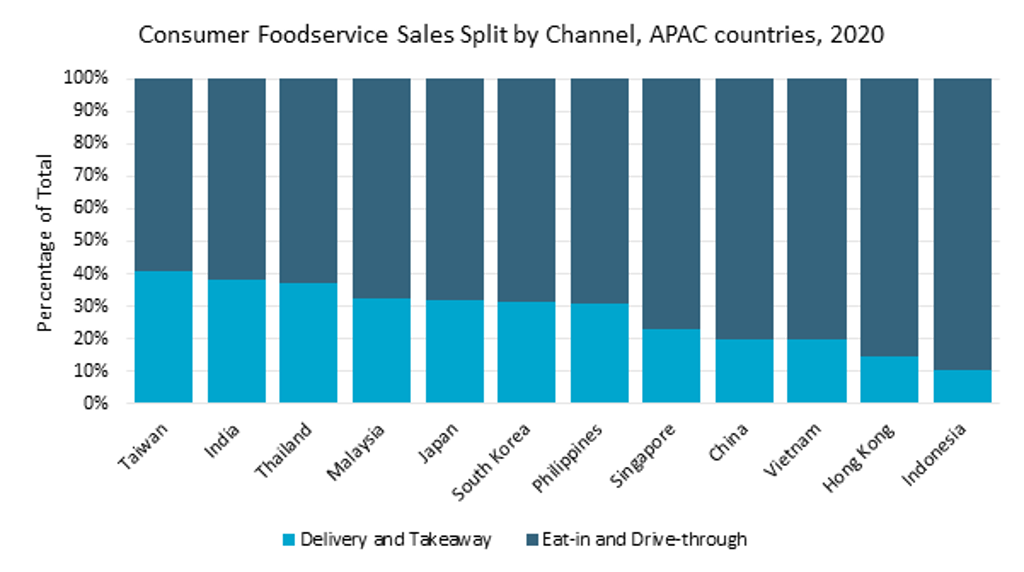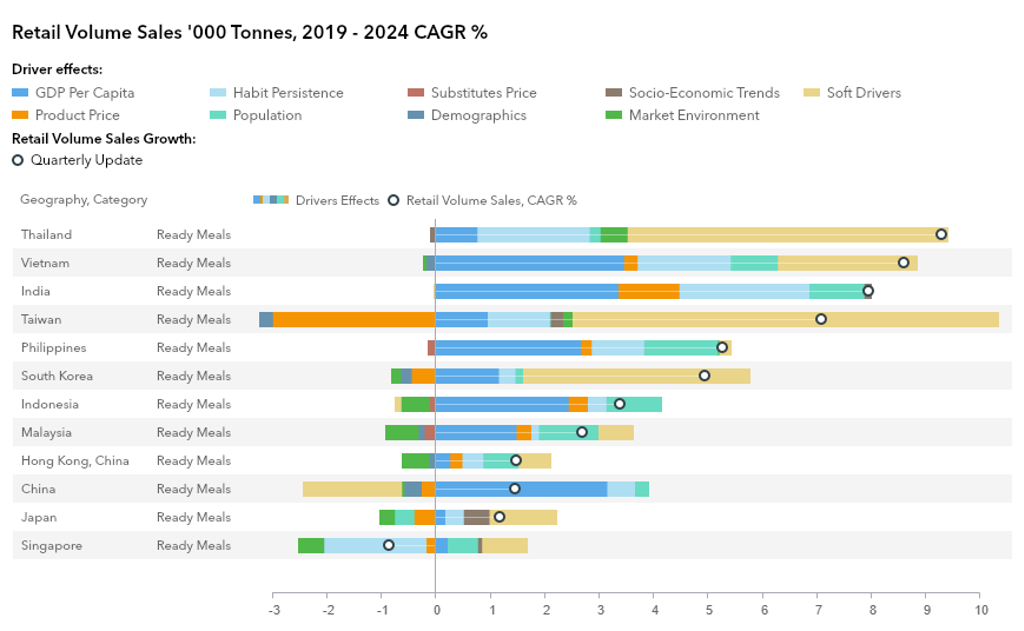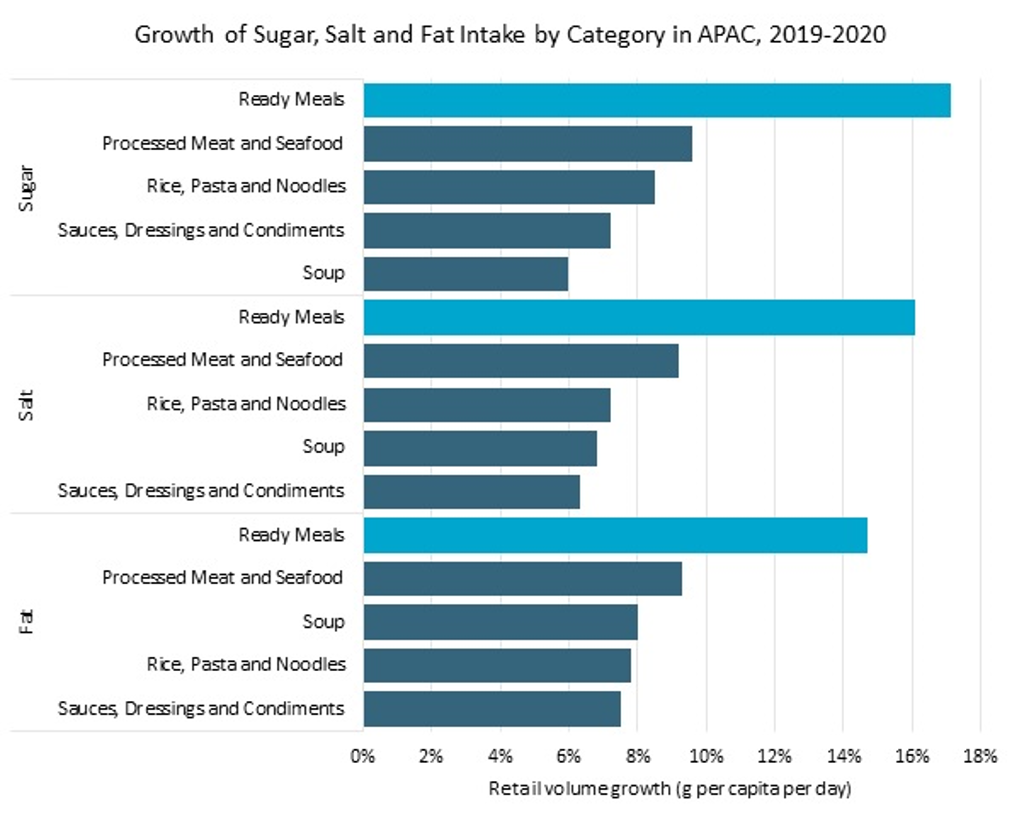In Asia Pacific, convenience remains a key factor, even for consumers under lockdown. Simpler and quicker meal solutions are still in high demand, especially in multi-generational homes where cooking daily meals for the entire household might cause fatigue. Pakistan, India, Philippines, Malaysia and Indonesia are some of the markets with the highest average household sizes, at between four to seven people.
Fresh food on demand is an alternative to home-cooked meals
Consumers may seek meal delivery and takeaway in markets where foodservice is still allowed to operate for non-dine-in sales. These options are made more accessible to consumers through digital platforms and e-commerce.
Source: Euromonitor International
Despite this, the relatively high price of delivery compared to cooking at home has caused many consumers to remain hesitant about ordering food online. This factor has been exacerbated during the pandemic as consumers become more conservative in spending. Online ordering also must contend with the availability of food for takeaway from stalls and kiosks, which make up 50% of foodservice outlets across Southeast Asia. Many of these are situated close to residential areas and have garnered the support of consumers during the pandemic.
2020 could be the year for Restaurant Meal Replacements (RMR)
The novelty of new cuisine or quality dishes has typically been sought after in foodservice, and this demand is still evident during lockdown. Foodservice providers seeking an alternative revenue stream have also turned to retail, causing a surge of packaged versions of restaurant dishes, either in ready-to-eat, heat-to-cook or cooking sauce formats. In South Korea where home meal replacements (HMR) has boomed over the past several years, RMR products are showing the beginnings of a similar growth trajectory, with support from e-commerce platforms.
The future is in ready meals and partially prepared solutions
Home-cooking and self-prepared meals remain a key element of Asian kitchens, albeit to varying degrees. Partially prepared packaged food, such as recipe mixes and all-in-one seasoning, are becoming increasingly common.
Growth of ready meals, including products that require heating or the addition of water, is expected to accelerate to 20% from 2019 to 2020 in retail value terms. This is despite reduced mobility, indicating that on-the-go is becoming less of a driver for ready meals. Even at home, consumers seek convenience and guidance to prepare their own food. Across Asian markets, these soft drivers are forecast to play a huge role in the demand for ready meals up to 2024, especially in markets like Taiwan, Thailand, South Korea and Vietnam.
Source: Euromonitor International Industry Forecast Model
Ready meals as the top growth category in Asia Pacific in 2020 is telling of the value of partially prepared meal solutions, even as consumers are given an opportunity to cook at home amidst dine-in restrictions and stay-at-home regulations.
The reliance on ready meals even at home also means that ready meals contribute a greater percentage of nutrient intake in consumers’ diets compared to previous years.
Source: Euromonitor International
Other pantry essentials like rice, noodles and sauces are expected to be responsible for a relatively lower increase in nutrition intake for consumers. Moving forwards, a closer look into the nutrition content of ready meals is expected as this product becomes increasingly common within home pantries.



